Simon Stone's Blog, page 2
October 4, 2011
Which Musical Instrument Should I learn?
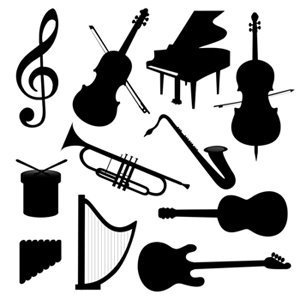 Something a little different for today's post. Picking the right musical instrument to learn. I honestly believe that anyone can learn to play an instrument. Some might have an extra helping of musical talent, but hard work and effort can bridge the gap.
Something a little different for today's post. Picking the right musical instrument to learn. I honestly believe that anyone can learn to play an instrument. Some might have an extra helping of musical talent, but hard work and effort can bridge the gap.If you've never tried learning a musical instrument, choosing which one you would like to learn isn't as straightforward as you might think. Not only are there a huge variety of instruments to consider, but there are often many styles and methods of playing each one of them. Added to that, some instruments are relatively easy to grasp the basics of, while others require a little more dedication and time and have a steeper learning curve to them. To make your choice you're going to need some help, so read on.
Perhaps the first question you should ask yourself is: what type of music do you enjoy most?
This is the starting point. Your answer is going to narrow the list down substantially. Do you like folk music? Then maybe think about the dulcimer, flute, acoustic or Spanish/classical guitar. Maybe jazz is your thing? Then perhaps something like the piano, the double bass or the saxophone would be ideal. Classical, orchestral music has the largest range to choose from but, with the exception of the piano, many classical pieces of music require you to play with others. Then again, playing with others once you're capable is one of the most enjoyable aspects of learning an instrument. So, think about what you like and have that in mind throughout the rest of the article.
To guide you in the process here is a list of the most common musical instruments with their pros and cons and which music they are most often associated with. Obviously this list is not exhaustive, but it will help you towards an informed decision:
Piano
The piano is a wonderful starting point for any aspiring musician, and once learned to an intermediate degree, forms a solid foundation for many other instruments, including the human voice. It's also very often the primary instrument in the composing process. Many classical composers would have used the piano to initially write their pieces for other instruments. On the piano musical notes are clearly visible, including sharps/flats, and chord structures follow patterns. In short, the piano is the quintessential instrument, and worth learning to some level even if it will not be your main instrument of choice as it forms a good basis for grasping general musical theory. Although a fine instrument when accompanying others, it is also great when played solo; and of course it still allows the player to sing while playing.
There are a few downsides. For one, decent pianos are expensive, though electric keyboards can be cheaper options. As with most instruments, you get what you pay for, but there are always bargains to be had if you're willing to buy second-hand. They can also take up a large amount of space and non-electric pianos, whether upright or grand, aren't very transportable.
Guitar
The guitar is probably the most wide-spread and popular of contemporary instruments. There are essentially three main types of modern guitar: the steel-string acoustic; the smaller, nylon-stringed classical – or Spanish – guitar; and the electric guitar. Each of those have sub-genres, most especially the electric guitar, which can come as a solid body of various types, a hollow-body, or a semi, each with its own characteristics. There are also less common types such as the diminutive ukulele, the banjo, and the lap-guitar that's so popular in country music.
Grasping the basics of the guitar is relatively easy to accomplish. In a short time an individual can learn enough chords to play some simple songs – it's amazing how much popular music uses just a few chords. Like most things however, to become an expert, even in one style, can take many years of work and dedication.
The guitar is light and easy to transport. Again and as always, you get what you pay for, but the sheer amount of guitars on the market ensures there are always bargains.
Flute
Now for a few of the most popular woodwind instruments. The flute is a reedless wind instrument and, when played well, is lovely to listen to either played solo or as part of an orchestra. It's also a popular marching band and school orchestra choice. Though very different to stringed and brass instruments, it is not difficult to pick up the basics. They're easy to carry around and can be purchased quite cheaply, especially those intended for beginners. Flutes are used in folk and orchestral music.
Clarinet
The clarinet is a single-reed instrument of the woodwind genre. In typical classical orchestras a Clarinettist usually has two at hand and ready to play; one in B♭ and one in A. They are quite complex instruments to learn, but once you are adapt, the jump to other woodwind instruments is much easier as most others tend to be more forgiving. Famous in big band jazz music, the clarinet has a very distinctive sound. Reed instruments do tend to be pricey however, so budget is a consideration. They are dissectible for ease of transportation.
Oboe
A quick look at an oboe can immediately tell you it's a more complex cousin to the clarinet. A double-reed instrument, it has a clear sound and resonance; so much so that orchestras usually tune to the oboe's concert A. The oboe has about 45 different keys on it, though some octave keys are semi-automatic or completely automatic, but this makes for a difficult time for beginners. It is considerably more expensive than the clarinet, though cheaper plastic resin models are available. Common in classical, jazz and folk music.
Saxophone
The sax is perhaps the most mainstream of the woodwind instruments, often played in pop, rock and blues as much as in classical and jazz and everything in between. It has similar keywork to other reed-based woodwind instruments but, with the exception of the soprano sax, a very distinctive shape all of its own. There are four main varieties, changing in size, pitch and tone. The largest can be cumbersome, especially if you have a small stature or are young. Again, these instruments are expensive. For example a low-end alto sax can cost as much as high-end guitar.
Violin/Viola/Cello
Now for the stringed instruments. The most famous and popular of which are the violin and its larger relatives, the viola and cello. The violin is famous as both a soloist and orchestral instrument and has been used in music as diverse as folk, rock, classical and even pop and dance. The violin is certainly one of the most beautiful sounding instruments when played well, but one of the worst when played by a beginner! This is because of its high pitch – at least for the violin; the viola is lower and the cello lower still – and fretless nature of the neck, meaning it is easy for a beginner to play notes too sharp (high) or flat (low). But if you put in the practice, learn the fingering and attune your ear, these instruments will sing like few others can. All three instruments can be played in different ways, most commonly with the aid of a bow.
While even a full size violin is small and easy to carry, the same cannot be said for the cello, which is played resting on the ground while the player sits. Cheap, beginner instruments are not overly expensive, but as you progress you will want to upgrade, and as with most musical instruments the price increases markedly as you move into professional grade quality. Hunt around for bargains.
Double Bass
This is essentially a larger version of the cello. It too can be played with a bow, though for non-classical styles is commonly plucked or "slapped" like a bass guitar. Famous in jazz music, it provides a rich, deep sound, complementing any percussion instruments.
A full size double bass is a huge instrument requiring a case large enough to fit a person in!
Trumpet//Horn/ Trombone/Tuba
Moving on to the brass instruments, we will look at the trumpet, one of the oldest instruments in the world. Used mainly in classical and jazz music and especially famous in the big band era, the trumpet has a distinctive sound and a high register – it's the highest of the brass instruments. It can be muted to give a softer tone with less volume. Easy to carry around and with initial learner or second-hand models at reasonable prices, it's a good instrument to start with, though be careful at what time of day you practice!
The horn (French horn) is the second highest of the brass instruments and is characterised by its distinctive circular silhouette and complex inner tubing. Mainly used in orchestral music, it is mid-size and not overly cumbersome to transport, and is known for its mellow tones.
The trombone is larger, often without buttons (or valves) for changing pitch. Instead it uses a telescopic motion, making for a very distinctive appearance and playing style. Although generally larger than a trumpet, it's still easy enough to transport.
The tuba is the largest and lowest sounding brass instrument. Never mistake a lower register for lower volume however; it can penetrate the walls of a house just as easily! Usually restricted to orchestral roles, of which there are commonly just one and at most two per orchestra.
All brass instruments are difficult to play softly, so bear that in mind! They can all be muted somewhat with a cone cap, but this does change the sound and feeling significantly.
Conclusion
Obviously this article has just scratched the surface. There are plenty of other common instruments out there, and many more unusual and exotic ones specific to a particular region, country or culture. Percussion instruments like drum-sets, steel drums, bongos, maracas and so forth, are worthy of their own space and are beyond the scope of this article, but certainly are not to be forgotten. In fact, many musicians have said that learning to play some kind of percussion instrument as well is a good way of developing better timing when you play your musical instrument of choice, so bear that in mind.
Hopefully this has given you something to think about. Perhaps the best advice is to go down to your local music shop and have a look around, try some instruments out and see what catches your interest. To get a chance to check out all of the instruments discussed above you might need to visit more than one type of shop. Learning an instrument is as much about the journey as the end result, and you have to be interested enough to want to learn, and enjoy the process of learning, without worrying about how long it might take you. But put in enough dedication and effort and you'll be making beautiful melodies in no time.
Finally, a brief note on lessons and their importance. Although music lessons are beneficial and should certainly be considered, do not overestimate them. There is a fine balance. Sometimes too much or too rigorous adherence to technical ability can stifle creative ability. If all of your time is spent learning the "correct" way to play an instrument and how to play other peoples' music perfectly, you might lose the ability to "think outside the box". Have lesions by all means, learn the techniques, but remember to be creative, break the rules, and learn to make and write your own unique music as much as play everyone else's!
Published on October 04, 2011 02:55
September 28, 2011
Rules of Writing Part 1: How to Write Prolifically
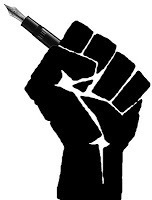 So far in my brand spanking new blog I've made several posts about my new novel and one observation. None of that is too constructive so I figure it's about time for something useful. (Speaking of which, one reader has asked for a more in depth "how-to" of my map-making process, so more to come on that in the near future).
So far in my brand spanking new blog I've made several posts about my new novel and one observation. None of that is too constructive so I figure it's about time for something useful. (Speaking of which, one reader has asked for a more in depth "how-to" of my map-making process, so more to come on that in the near future). First though is the start of my new series on the Rules of Writing. Now why should I be giving lesions and lectures on writing? I'd be the first to admit I don't know half as much as I'd like to on the subject, but I also know that after four years of being an editor in the writing department of a distance learning college, having a degree in English literature, and with a good 18 years of writing behind me, I've built up some formulae and tips and experience which I want to add to what's already out there. I know there are plenty of guides on becoming a better writer, but each guide has something different to offer or a different slant on a concept, so hopefully you'll find a few useful things in my series you can implement in your own writing.
So, without further preamble, onto Simon Stone's Rules of Writing: How to Write Prolifically.
All writers want to be able to finish what they start. No one wants to read a story without an ending, or a book about 20th century aviation that only goes as far as the 1950s, or a biography about Elvis that doesn't even get to That's All Right Mama. As a reader, if you pick up a book, you expect to be able to finish it... at least, if you want to.
So why do so many writers (myself included) have a dozen or more (sometimes a LOT more) unfinished bits of manuscript tucked away in their drawers and harddrives that have never been completed?
There's the obvious reason: They're unfinished because they're not all that good, because halfway through you realised the story was just a part of the huge learning curve a writer starts but never actually finishes.
But the other reasons could be (and is in my case), that a work remains unfinished because you took so long writing each page, each chapter, each section. You constantly went back to sections to edit them, then read them again and edited them again, then left the whole thing for a few months after you lost steam, came back and, reading it though to catch up, began editing and changing again along the way, and on and on and on until finally one of the times you ran out of steam you never actually re-visited it again. Sound familiar?
What I've just described is, in itself, part of the learning process for a writer too. In my own case it took me a good fifteen years of trying to write about six different novels before I finally worked it out. Admittedly I had long breaks and juggled several careers and university in it all too, but it took a long time.
But once I realised what I needed to change I managed to write, edit, polish and have ready for publication three separate novels (each over 130,000 words in length) in the space of three years. And those three years also included full-time work, studying for a degree in physics, family commitments and some pretty time-demanding hobbies of their own. I consider that quite prolific.
So how did I manage it? I'll explain by telling you what I don't do when I set time aside to write:
I don't pace the room with a pen in my mouth, thinking up the most profound, eloquent and jaw-dropping opening line in history. Maybe I should, but there are too many distractions and I'd probably end up playing my piano or watching TV before I realised it.
I don't spend ten minutes beforehand in a yoga pose meditating to clear my mind. (Having said that I've never tried, so maybe that one works...)
I don't drink and write. A drunk writer behind a fast keyboard has killed many a muse.
I don't write a paragraph or two and re-read it to death until it's lost all meaning and I've lost all objectivity and sanity – some would say I never had any. Sanity, that is.
I don't (read try not to) get distracted by surfing the internet or checking emails or making a coffee after just five minutes of work. That's sometimes a tough one.
I'll leave the rest of the don'ts there but you get the general idea. So, here's my first rule.
Important Rules of Writing Number One:
Get Writing.
That's it. Succinct, simple, to the point. Bleeding obvious probably. Except it took me years to work that out.
Don't mess around wondering what to write and worrying that it should be something spectacular. Just get stuck in. And that's the best advice I could give to any aspiring writer. Get on with writing. If you're staring at a blank page and don't know how to start, just start writing random thoughts to get the head and fingers going, more often than not it will trigger something off. If you've been working on your master novel and hit a brick wall, take some time to think, sure, but not too long. No story is perfect on the first draft, that's where edits and re-writes come in. Try and get every sentence and every paragraph and every plot-point exactly right first time around and that first draft will never get finished.
Now I'm not saying don't plan ahead, because you need to. Having a good idea where you're going in your story is REALLY important, but that's different, that's a separate post all on its own. When it comes to writing your actual novel, just get on with it. As an additional rule, think about this:
Don't look back at what you've written unless you need to check something plot-wise.
This is a life-saver for me, so it's worth at least considering. I don't look back when I write until the first draft is done. If I need to check something (the spelling of a character's name or location or sub-plot) that's fine, but I ignore the actual prose. If I see a typo I ignore it. If I see some really badly written dialogue I ignore it. The editing comes later. I force myself to leave it alone. It's hard, but it helps me finish the first draft.
Okay, so there you go, that's got me started. Hope that helps someone. Feel free to leave comments and tell me what I've missed.
(If any bloggers want to add this to their blog as a guest post let me know. Long as you link to my blog and mention me that should be cool.)
Published on September 28, 2011 10:58
The Shadowed Path now available on Amazon
Just a quick post today as an update. My first novel, The Shadowed Path, is now available to buy on Amazon (.com, .co.uk and .de) for anyone interested in the kindle version.
Here are the links:
http://www.amazon.com/dp/B005OZIHJW
https://www.amazon.co.uk/dp/B005OZIHJW
https://www.amazon.de/dp/B005OZIHJW
Next post:
Rules of Writing Part 1: How to Write Prolifically
Published on September 28, 2011 02:56
September 27, 2011
When is my novel ready?
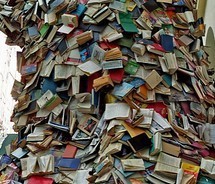 This post actually started as a reply to another post here: http://darkewhispers.blogspot.com/2011/09/why-good-review-of-bad-book-can-hurt.html but became so long I figured it's better off in its own little corner of the cybersphere.
This post actually started as a reply to another post here: http://darkewhispers.blogspot.com/2011/09/why-good-review-of-bad-book-can-hurt.html but became so long I figured it's better off in its own little corner of the cybersphere. What makes someone a writer? In my opinion not all that much. Cobble a few words together, have the desire, do it because you love it, and hey presto, a writer is born.
But does that mean you should then give your story a quick once-over, checking for any obvious issues, give it a rudimentary cover, and send it out into the world? From what I've seen so far (to my dismay but not surprise), there's a lot... no wait... a LOT of junk out there saturating the ebook online shops (some shops are worse than others). When I say junk, I don't mean to be rude or sound superior, I just mean that sometimes great ideas have been sent out way too quickly, haven't been given the necessary time and vast attention to detail that a novel needs to make it really great. I'm talking about the re-writes (plural), the editing (plural), the sending out to third-party test-readers (not friends or family), the money or time or both spent on designing a really good, professional looking cover, the surprisingly complex task of setting the layout in print and ebooks, all of that. It seems crazy that someone would put the effort into writing an entire novel, even if many of them are short, and then throw it out there in its unfinished form.
It's a shame Smashwords, KDP, Createspace and the rest seem keen to make sure a book looks "good" without bothering about the written quality of the product within. (I use the term "good" lightly because there are still just so many obviously self-published badly cobbled together covers with poor layouts anyway). I know they can't read every book for quality, but there should be some form of audit, because currently there's nothing to separate the chaff. Sure, eventually a great book will do well on its own merit if it's been marketed well and has good reviews, it's just sad that so many readers might never read it because they're too busy drowning in the morass of bad novels to ever find your gem.
It's tragic because It essentially means anyone with enough time to put enough words together (whether they make sense or not) and fashion some sort of cover, can publish. Which means they flood the market with rubbish and continue to give indie authors a bad name.
What's sad is that as long as people churn out poor quality books and the ebook shops accept them, that reputation isn't going to go anywhere.
So if you've written a novel, fantastic. That in itself is a great achievement. Just make sure it's the best you can manage... and then leave it somewhere for a while and return to it with some objectivity and edit it... repeat... repeat if needed... make sure people with no connection to you love it... then make sure it looks professional...
...and then feel good about sending it out into the world knowing you're contributing to positive change rather than negative stereotyping.
Published on September 27, 2011 04:17
September 26, 2011
My first novel is available to buy!!
 So while I trundle through the morass that is the kindle direct publishing experience, the incredibly user-friendly Smashwords has my book, The Shadowed Path, ready for purchase. You can find it here: http://www.smashwords.com/books/view/90405
So while I trundle through the morass that is the kindle direct publishing experience, the incredibly user-friendly Smashwords has my book, The Shadowed Path, ready for purchase. You can find it here: http://www.smashwords.com/books/view/90405And you can read a sample for free to see whether you'd enjoy the rest of it or not. I plan on putting a sample up on my website soon too, but for now you can just get it from Smashwords.
And, if you want to buy it DONT!!! At least not until you've used this coupon number to get 20% off the list price!!
WJ63P
The coupon will be valid until 26th October so make the most of it!
Published on September 26, 2011 03:33
September 23, 2011
In the works...
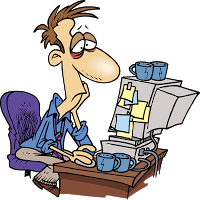 So last night (high on that sweet nectar that is coffee) I finished submitting The Shadowed Path to amazon kindle and the Smashwords collective. They're both now in review and should be up soon. Smashwords will take a week or so before it passes the novel on to the iBookstore, Barnes & Noble etc and in the meantime I'll be submitting my book to as many reviewers as will have me (in between work, finishing my degree, family, jogging along merrily with the London rat-race... its a busy life).
So last night (high on that sweet nectar that is coffee) I finished submitting The Shadowed Path to amazon kindle and the Smashwords collective. They're both now in review and should be up soon. Smashwords will take a week or so before it passes the novel on to the iBookstore, Barnes & Noble etc and in the meantime I'll be submitting my book to as many reviewers as will have me (in between work, finishing my degree, family, jogging along merrily with the London rat-race... its a busy life).That said, having jumped through the kindle, smashwords hoops, if anyone needs any help or advice on the subject do get in touch, especially if you're a UK/Eurozone writer and have questions about getting an ITIN for tax.
Published on September 23, 2011 04:05
September 22, 2011
Cartographical evisceration
So, a day later, about four hours worth of learning curve, and a paper cut (second only to hard plastic wrapping in deadliness) and my map is finally done! Well, I say done... what I mean is it's good enough until (read if ever) I have the wherewithal, time and money to invest in a professional artist to make one up. But I gotta say I'm happy with the result. I've done two versions, one with a plain background that will go in the print edition of the novel and the other on parchment that will go on the website here. I'm just a bit worried the dimensions might not be right for the print edition and some of the fonts too small... we'll see.
Following the web-guide I linked to in the last post (very helpful), and using the wonders that are photoshop and free licence clip art, I managed to turn this:
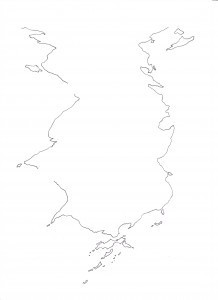 And this (and others like them)
And this (and others like them)
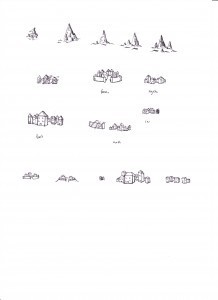 Into this!!!:
Into this!!!:
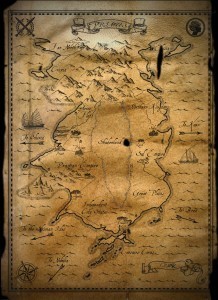
Not too shabby eh? Click on the images to see them better, right click and open in a new tab to see the full detailed version.
This will now be going up in the "The Shadowed Path" page and the html link will be on the ebook versions.
Oh, and for all you RPG lovers, feel free to use this map for any games you want to play!
Published on September 22, 2011 09:12
September 21, 2011
To map, or not to map...
 I love fantasy, love writing it, love reading it, love playing it (not that I have time for that much these days). It's a very visual experience for me, whether the visuals are imagined or watchable or tangible, being able to picture the surreal situations and step outside of reality for a while is as much a part of reading fantasy and sci-fi as engaging with the plot and characters.
I love fantasy, love writing it, love reading it, love playing it (not that I have time for that much these days). It's a very visual experience for me, whether the visuals are imagined or watchable or tangible, being able to picture the surreal situations and step outside of reality for a while is as much a part of reading fantasy and sci-fi as engaging with the plot and characters.So... while I'm putting the finishing touches on my plan for global domination I' wondering whether I should make a map for my fantasy book or not. The pros: Firstly, it'll be fun to do, I love anything artistic. Secondly, I already have a rough draft in the back page of the proof copy of my novel just to make sure cities and points of interest don't decide to emigrate to more scenic locations half way through the story. Thirdly, I always like it when a fantasy novel has a map included, and some (Martin, Tolkien, Jordan etc etc) really need them. So yes, I think I'm going to give it a try. It won't be included in the Kindle, iBook et al editions, and the print edition is still just far enough away that I could add a map into it should it turn out well enough.
But here are the cons: I would like to add the completed map to my website somewhere so I could add a link into the ebook editions, but I'm very much aware of not wanting to make my website and readers think I'm all about fantasy, because I'm not. My next novel (the cover of which you can see on the site) will be out at the start of next year and is a historical/contemporary thriller with a touch of romance. I do not want to be pigeon-holed into a genre. I appreciate that it's very early days but "start as you mean to go on" and all that.
First things first. Make the map, then decide. For anyone interested I'm basically using this technique: http://www.giveupalready.com/content.php?50-Fantasy-Map-Photoshop-Tutorial
Published on September 21, 2011 07:40
September 20, 2011
Start small... think big
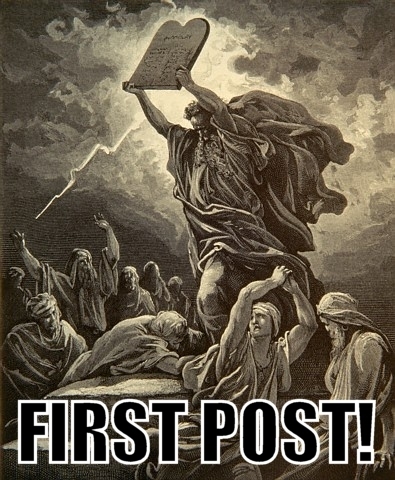 So this is it, my very first blog post. Quick bit about me: I'm a writer... for me that's first and foremost and anyone who has the bug will understand. I also dabble as a musician, computer nerd (who doesn't these days?) and general creative type. I live in London, UK, and I'm about to publish my first novel... okay, indie-publish. So I thought I would chronicle my journey and garner support while spreading the word and maybe helping other aspiring writers out there in the process and making new friends. Oh yes, and I will be blogging about books, reviewing them and anything else that takes my fancy in the process! And in the meantime feel free to check out my website by clicking HERE! and drop by and say hi.
So this is it, my very first blog post. Quick bit about me: I'm a writer... for me that's first and foremost and anyone who has the bug will understand. I also dabble as a musician, computer nerd (who doesn't these days?) and general creative type. I live in London, UK, and I'm about to publish my first novel... okay, indie-publish. So I thought I would chronicle my journey and garner support while spreading the word and maybe helping other aspiring writers out there in the process and making new friends. Oh yes, and I will be blogging about books, reviewing them and anything else that takes my fancy in the process! And in the meantime feel free to check out my website by clicking HERE! and drop by and say hi.
Published on September 20, 2011 12:23



